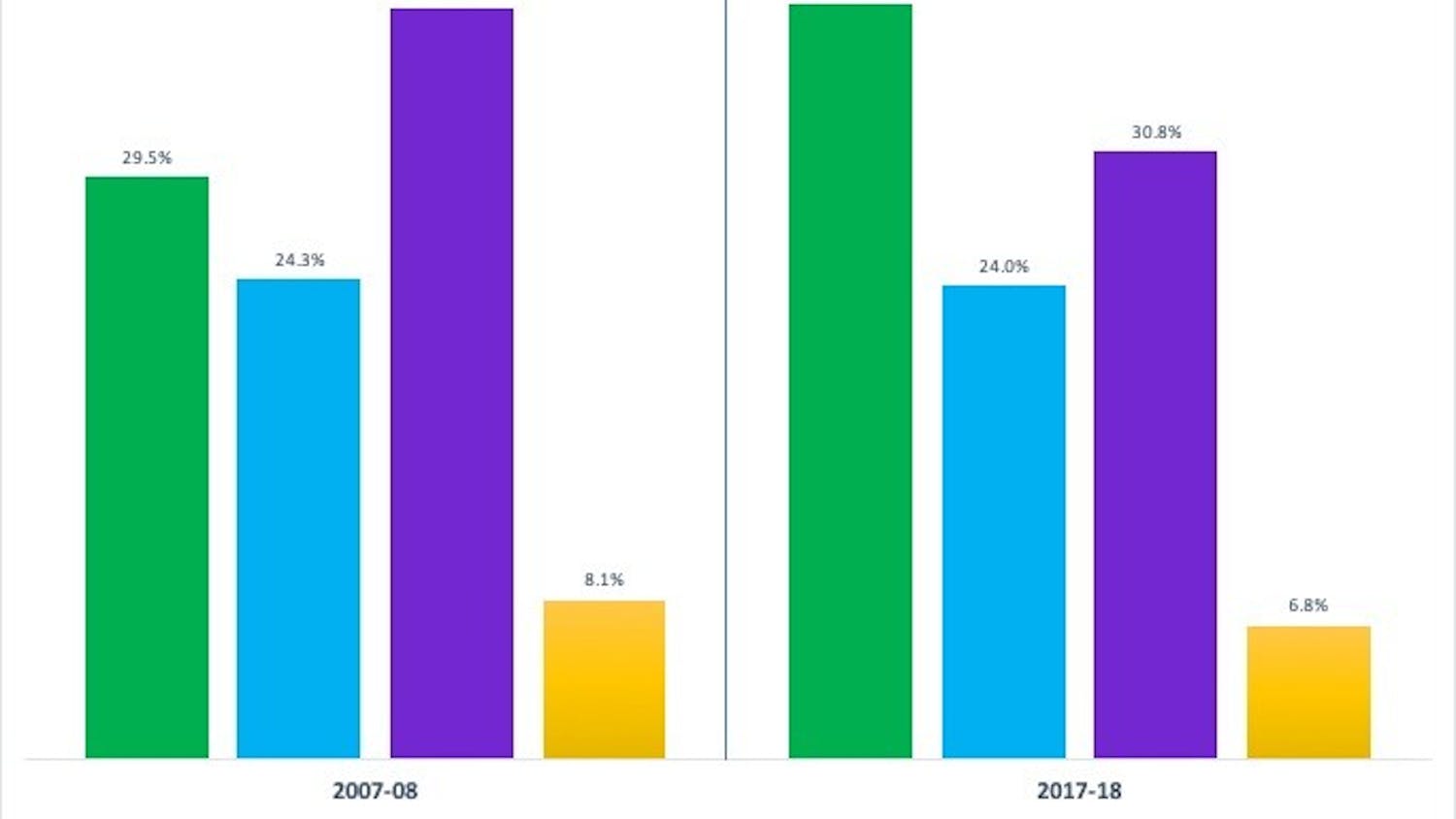When students pick out new classes each term, one of their many considerations could be the grade medians of the available courses. At the end of every quarter, in addition to reporting individual grades, the College registrar also places the median grade of each class on a student’s transcript. These grades represent the 50th percentile of students’ grades, with half of the class earning grades below the median and the other half earning grades at or above the median.
According to a report provided to The Dartmouth by College registrar Meredith Braz, the decision to add grade medians was instituted in the fall of 1994 and was first applied to members of the Class of 1998. In May 1994, the College Committee on Instruction published a report that recommended the publication of grade medians. The report said that grade medians would allow “outside users” of a transcript to get a better understanding of a student’s rank in their classes and that grade medians could potentially reduce grade inflation.
“It is hoped that this system may address the problem of continued grade inflation, by reducing incentive for faculty to continue to increase their grades ...” the report stated. “It is also hoped that the effects of differential grading will be in part ameliorated, thus providing additional incentive for students to take courses in areas where the average grade is relatively low.”
When it comes to the actual calculation of grade medians, the website for the Office of the Registrar that grade medians are calculated from all students — undergraduates or not — who are enrolled in a given class. In the event of the median falling between two letter grades — for example, between an A- and a B+ — the transcript will show a notation of A-/B+.
At the end of each term, most courses have their medians published publicly, along with the total enrollment for the course. The website indicated that all courses with an enrollment of less than 10 are exempted from showing median grades, and that department chairs can request that certain courses be exempted from medians. Typically, these are honors or independent study courses.
Dartmouth is unique in its decision to issue grade medians. According to Student Assembly president Luke Cuomo ’20, Dartmouth is the only college in the United States that currently publishes its grade medians. Cuomo noted that while Cornell University began publishing grade medians in 1998, it discontinued this policy in 2011, with a report having found that grade medians had “little to no impact” on grade inflation.
According to Cuomo, students have mixed opinions on grade medians. Cuomo said that from his conversations with students, some see the grade medians as beneficial for postgraduate opportunities, while others see medians as discouraging them from taking more challenging courses.
“Some students see medians on their transcripts as a positive indicator of their performance in context,” Cuomo said. “Other students see it as kind of harmful to their academic development and an unfair burden placed on school.”
Some students expressed more positive views on the issue, noting that they feel that their grades help them understand where they rank in their classes.
“It feels helpful to understand how well I did,” said Sidra Goldner ’23. “It makes me feel like I’m not in a vacuum, but it gives me context as a student. I haven’t really heard arguments against it though.”
Allison MacLeod ’23 concurred, saying that medians are “really helpful” in regards to contextualizing the difficulty of a class and how a student’s grade “fits into the larger narrative of the class.”
“What I don’t love is when professors decide they must have a certain median for their class,” MacLeod said.
Some professors have also shown doubts about the effectiveness of grade medians. Economics department chair Nina Pavcnik said that the decision to issue grade medians has driven students toward professors who have higher median grades, and that as a result grade inflation has only worsened. Pavcnik added that the economics department has resorted to standardizing its medians across courses of similar difficulty in order to ensure that students are being graded on similar expectations.
“The reason why we implemented this policy was that we did not think it was fair for lucky students to get higher medians than other students in the same courses,” Pavcnik said. “We want students to choose courses in economics based on their academic interests and not medians.”
In response to these concerns by students and faculty, Cuomo said that the Student Assembly is currently in discussions with both students and faculty in order to gain a sense of the community’s broader opinion on grade medians. Cuomo added that due to the spectrum of opinions on campus, Student Assembly is currently focused on conducting more research before determining the overall impact of grade medians on students.
“We’ve had conversations with the student assembly and senate, as well as [Dean of the College] Kathryn Lively,” Cuomo said. “I think it’s a perfectly appropriate topic for the Student Assembly to investigate and see if this policy is really helping students, and if not, what changes need to be made.”



